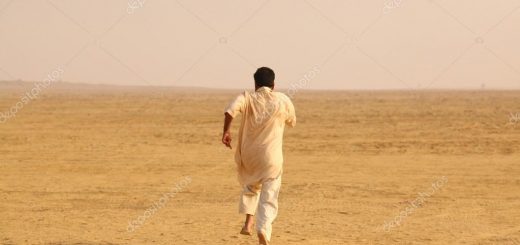Defining History Down

Under siege by some of his countrymen for seeming to have acknowledged the Holocaust, Iranian President Hassan Rouhani tried to walk that Chihuahua back at a forum this week sponsored by the Council on Foreign Relations and the Asia Society. Asked to clearly state his stand on the issue, he chose to condemn “crimes by the Nazis during World War II [including the killing of] a group of Jewish people.”
Another “defining down” of historical fact also recently appeared, this one emanating from a more respectable source, the New York Times, in a video on its website. The background clip accompanied a print report about Jews who ascend the Har Habayis, or Temple Mount, thereby passively challenging the Muslim authorities to whom Israel has ceded oversight of the ancient Jewish holy site. Those overseers forbid Jews from praying openly there; some of the Jewish visitors, apparently, dare to do so silently.
The second of the two holy Jewish national temples that stood on the mount for centuries, of course, was destroyed by the Romans in 70 C.E. It was more than 600 years later, after the Islamic empire spread to the Holy Land, that a small mosque was erected there. An earthquake destroyed the mosque, and a second one was subsequently built on the spot, although it met the same fate shortly thereafter. In 1035, the grandiose mosque currently occupying the Temple site was built, and thus far survives.
The Times article itself, as it happens, hinted at something that deserved more prominence in the piece, namely that the most respected Jewish rabbinic authorities have forbidden all Jews, in no uncertain terms, from ascending the Mount, both for halachic reasons and to not give the mosque’s overseers and other Muslims any excuse to engage in violence. Charedi Jews are often the focus of news reports from Israel. In an article presented to millions that speaks of religious Jews doing something that some regard as politically provocative, it would have been proper to point out that the Jews at issue are decidedly not charedim, and that the latter disapprove of their actions.
But what was truly disconcerting was the narration of the Times’ video expanding on the article. It referred to the Har Habayis as the place “that Jews call the Temple Mount…” and that “Jews widely believe was the site of the Temples.” Italics, of course, mine.
Such subtle casting of long-accepted historical fact as mere popular Jewish belief is of a sort with the subtle devaluation of “Judaism’s holiest site” the Old Gray Lady has perpetrated in the past – like when it bestowed that honor to the Western Wall rather than to the Temple Mount that lies behind it.
Fact: Objective students of history – of all ethnicities – see no reason to not accept the Bible’s account that, approximately nine centuries before the beginning of the Common Era and nearly 1500 years before Mohammed’s grandmother was born, King Solomon built the first of the two Holy Jewish Temples on that Jerusalem site. And that sacrificial offerings, as the Talmud and Roman sources alike recount, were brought on the altar there on behalf of both Jews and non-Jewish visitors.
That that history derives mostly from Jewish texts and Jewish tradition is no deficiency. The meticulous preservation of history is the nuclear strong force of Judaism, and is what has preserved the Jewish nation for millennia. Jews the world over just celebrated, on Sukkos, the collective memory of their ancestors’ Divine protection after the exodus from Egypt; that exodus itself is mentioned hundreds of times each year by every observant Jew in prayers and rites.
He or she recalls the ancient Jewish Temple too, every single day of the year, in each of the silent prayers – recited facing the Temple Mount – that are the backbone of Jewish religious life.
On holidays, moreover, the special Mussaf prayer includes a lengthy bemoaning of the Temples’ destructions.
The words “Jerusalem” and its synonym “Zion,” the city whose holiness derives from that of the Temple Mount, passed my lips at least ten times this morning. Before breakfast.
And that repast was followed by the grace after meals, which includes an entreaty of G-d to rebuild Jerusalem – meaning the Temple.
That rebuilding, to be sure, isn’t a call to human physical force. The Third Holy Temple will be built by the hand not of man but of G-d, the object of our entreaty. That is likewise evident in the passive form of our prayer elsewhere: “May it be Your will that the Temple be [re]built.” But that collective Jewish prayer will be prayed – our spiritual contribution – until its fulfillment.
In the meanwhile, however much mullahs or media may seek to distort inconvenient historical facts, people devoted to truth will continue to know better. They will know that, just over 60 years ago, millions of Jews were murdered by the Nazis and their friends. And that, over 2000 years ago, a Holy Jewish Temple stood on the hill that still carries its name.
© 2013 Rabbi Avi Shafran



Recent Comments